We have a saying here at TrendWatching: ‘trends are useless unless you apply them’. Thankfully, we’ve spent the past two decades developing a tool designed to help you do exactly that.
If you’re not already acquainted, allow us to introduce you to the Consumer Trend Canvas – a priceless piece of kit in the TrendWatching ToolBox that’s helped brands across the world bring bold new ideas to market. This worksheet (whether completed virtually or IRL) provides a step-by-step framework for creating innovations.
Before we go any further: a request. If you haven’t read Make→Shift: ACCLIMATORS, hop to it. In this demonstration, we’ll show you how to turn the takeaways from our latest publication into a boundary-pushing business innovation that actually responds to the wants and needs of the modern consumer. So, without further ado…
Step One | Blank Canvas
Here it is – the naked canvas. Start by writing your chosen trend in the top left-hand corner. We’re applying ACCLIMATORS, from our Make→Shift: ACCLIMATORS edition, but you could apply any of the previous issues of Make→Shift. Alternatively, pick a trend from your brand’s internal framework.
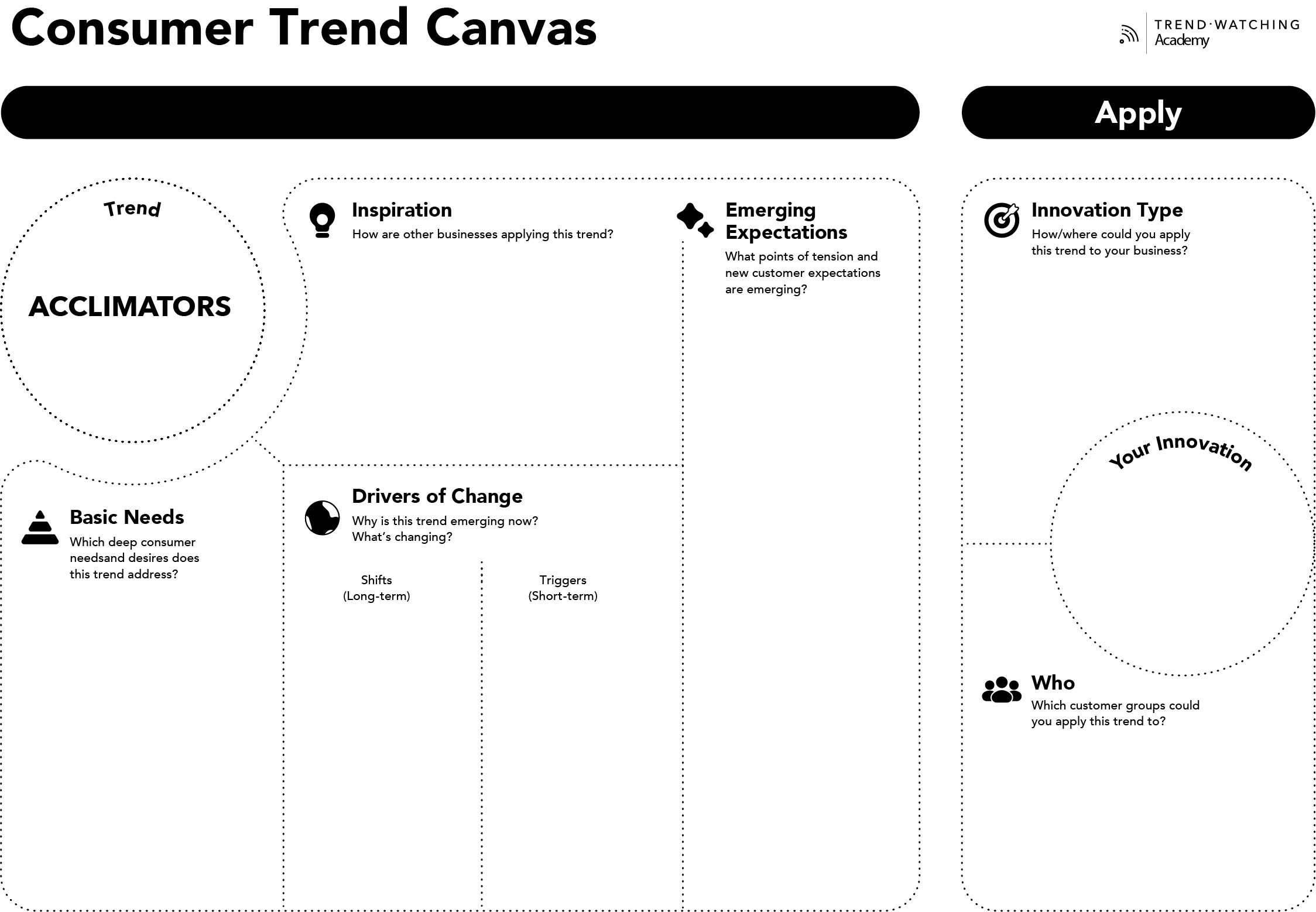
Step Two | Inspiration
Kick things off by identifying some examples of the trend in action. This is where your research skills come into play. Aside from scouring innovation hubs like Innovation of the Day (sorry, couldn’t help it), Fast Company and The Verge, try searching the business sections of mainstream media outlets. We suggest including a variety of products, services, campaigns and concepts that exemplify the trend within your region. We’ve plucked ours straight from Make→Shift: Fridays for Future, Barcelona Cool Walks, AutoNavi’s flooding tools and Survive the Century.
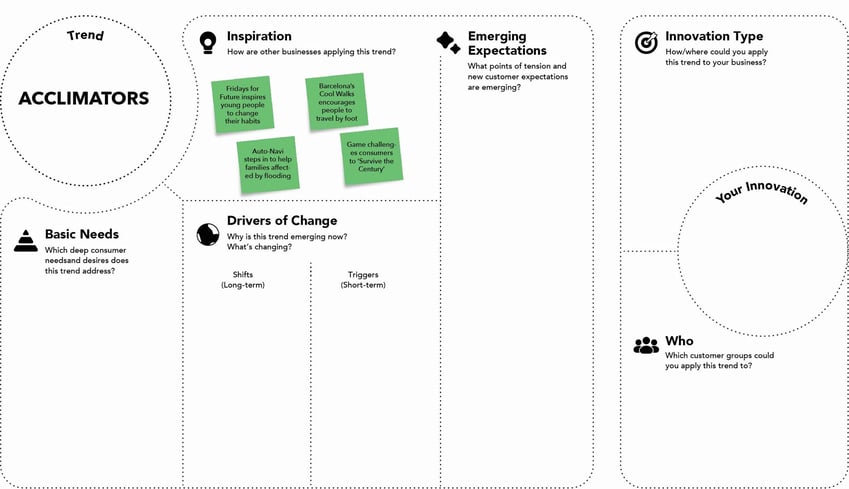
Step Three | Basic Needs
Which basic human needs does this trend fulfil? There’s no right or wrong answers, providing you can justify your choices. We think ACCLIMATORS caters to the fundamental human desire to leave a positive impact on the world, to feel secure in one’s surroundings, to maintain peace of mind and construct one’s identity. Our insider tip? Go light on the post-its. If you pick more than four basic needs you’ll regret it later on. Trust us...
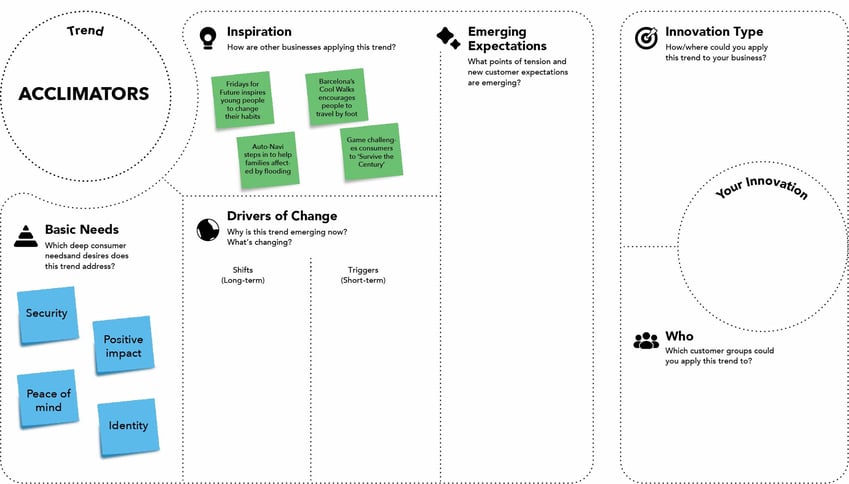
Step Four | Drivers of Change
When we talk about Drivers of Change (DoC), we’re referring to the long-term shifts and short-term triggers that influence consumer opinions and behavior. A shift might be anything from the ongoing climate crisis to consumer demands for transparency, while the rise of climate influencers or a sudden spike in extreme weather events (think tornadoes in London and flooding in New York) would be considered triggers. Unsure whether a DoC sits in the shift or trigger camp? Reach out to friends or colleagues for their opinions.
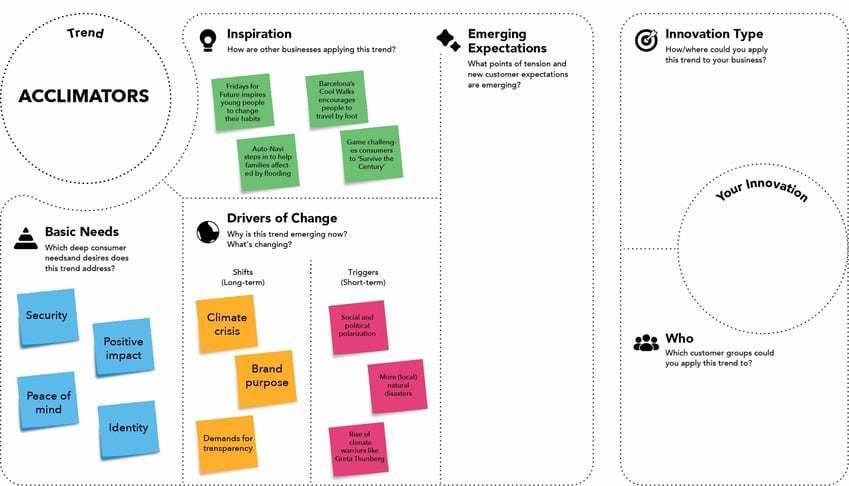
Step Five | Emerging Expectations
Okay, now it’s time to synthesize each of the three segments we’ve just completed and pick out exactly how they’re working together to reconfigure consumer expectations. This isn’t about highlighting what consumers want (remember, you’ve already identified consumers’ basic needs), but pinpointing what consumers will perceive as ‘the new normal’.
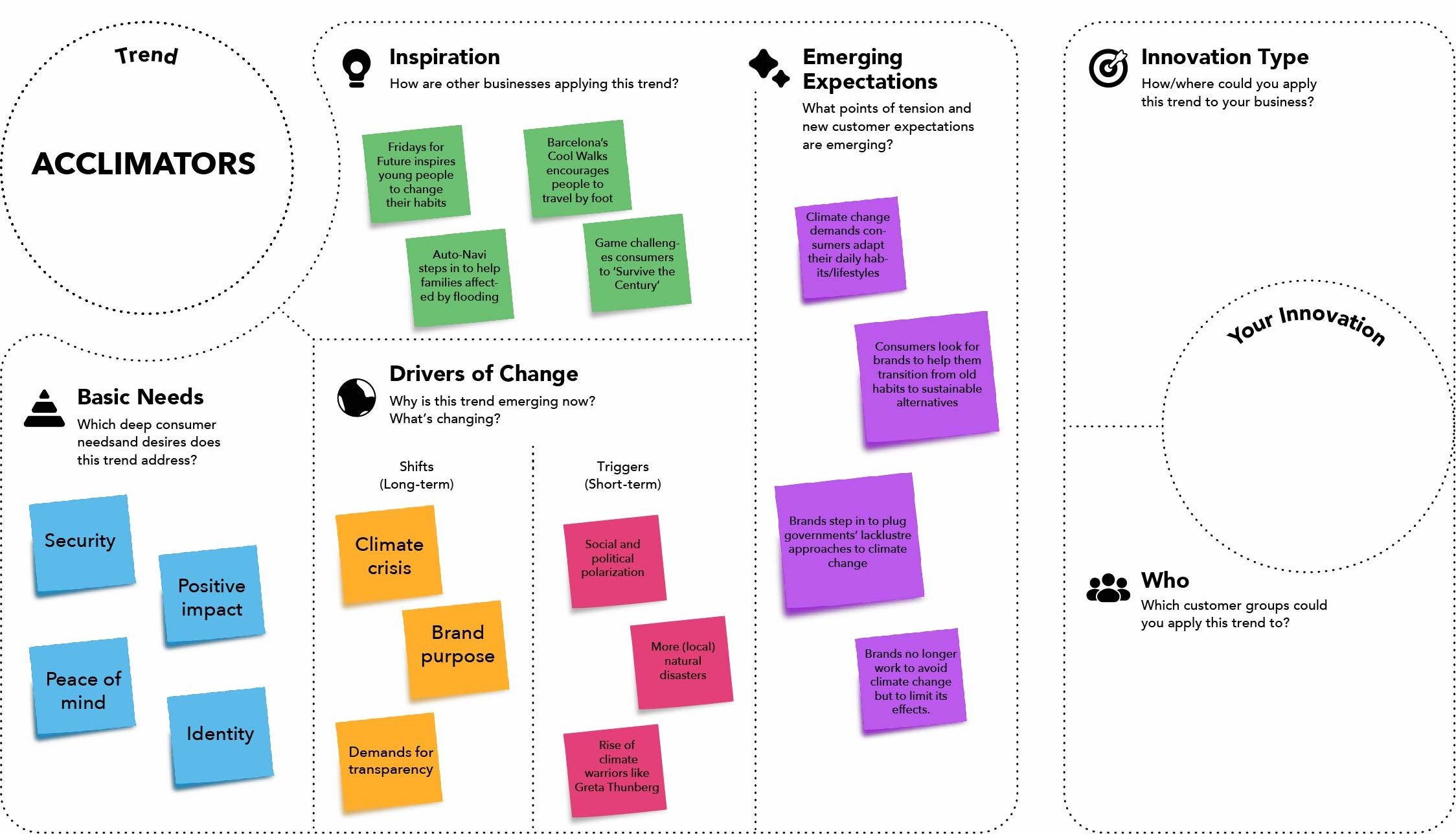
Step Six | Innovation Type
You’ve reached it: the Apply section! Your new innovation is almost fully baked – just a couple more steps to go. Take your brand (or a brand you admire) and think about which format your innovation should take. We like to categorize innovations as services, products, campaigns, experiences or concepts, but the most interesting innovations are those that blur boundaries. Did someone say ‘experiential marketing campaign’?
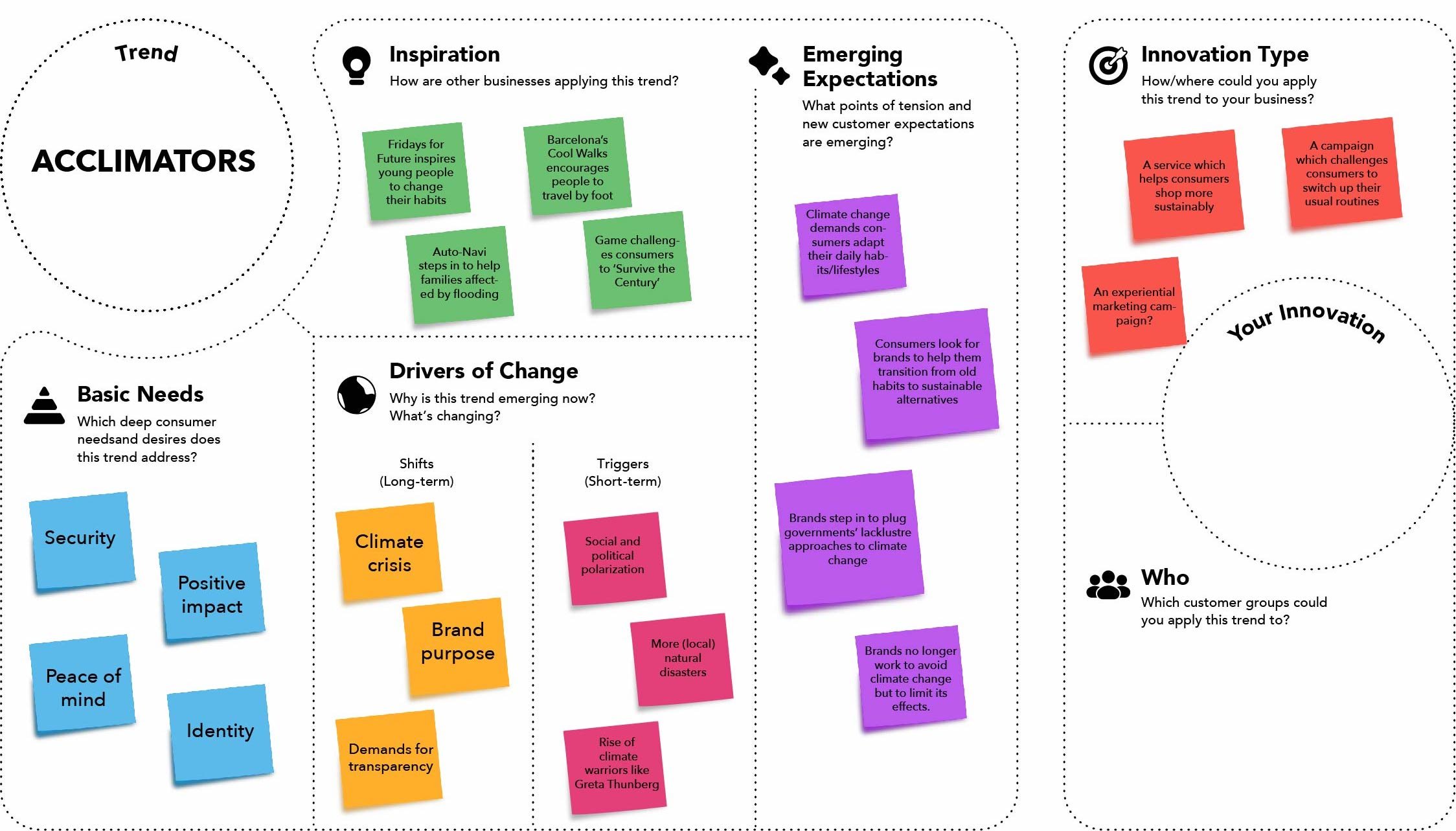
Step Seven | Who?
You know this better than we do. Who will your innovation talk to? Which regions? Which generational groups? Which niches? Don’t feel restricted by your existing demographics. Climate change is a problem for everyone – no matter your age, gender, race or location – meaning that an ACCLIMATORS-focused innovation could (and maybe should) have relevance to consumers across the board.
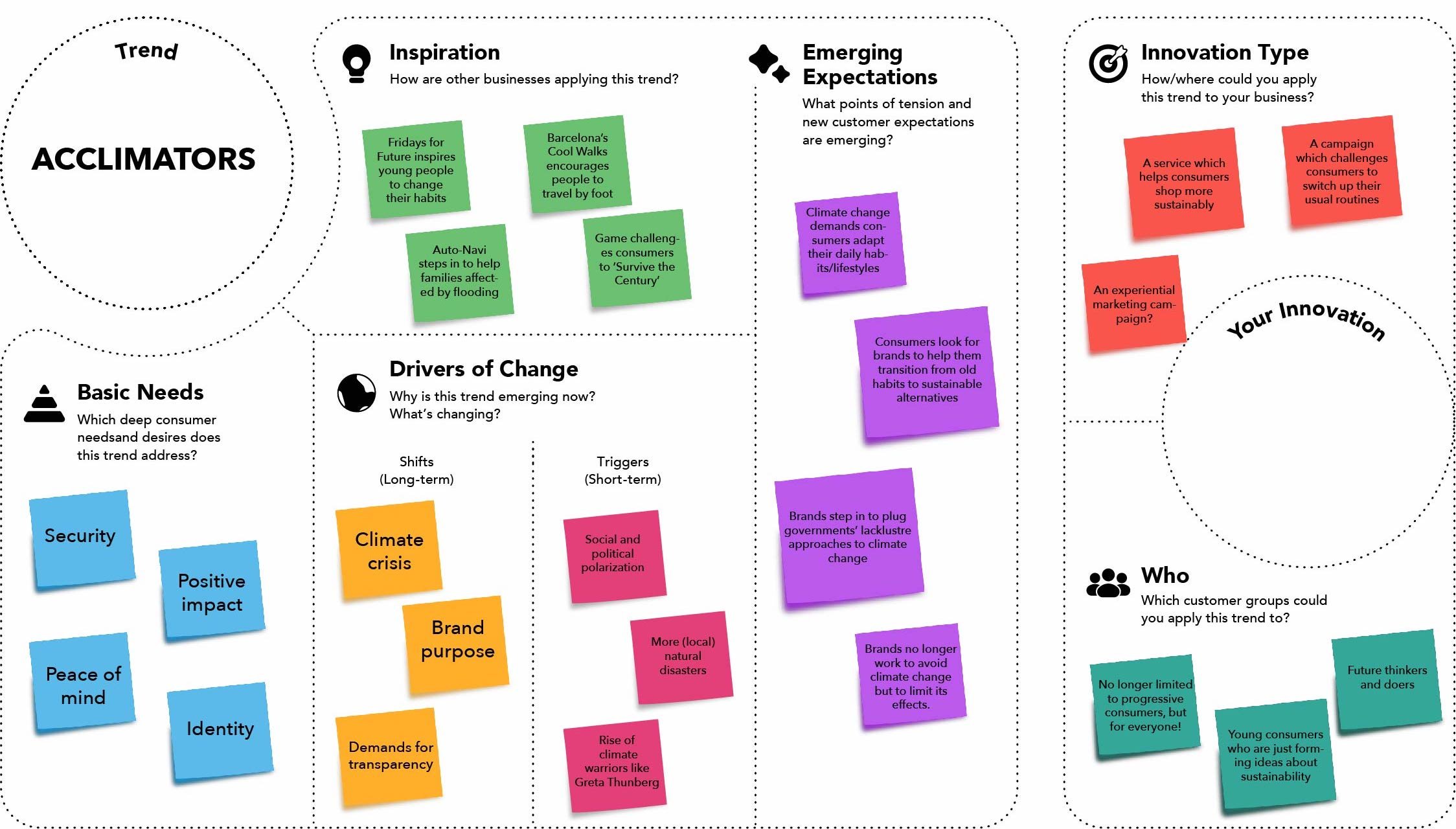
Step Eight | Your Innovation
Remember what we said about Basic Needs? Yup, here’s why. If you’ve plastered your canvas with post-it notes, collating all of the information and insights you’ve gathered into one innovation might be difficult.
Our idea? A pop-up space where consumers can learn how to adapt [INSERT BRAND HERE]’s products to help them deal with climate change’s immediate effects. It could be a physical pop-up that is supported by virtual livestreams, enabling consumers in various locations to learn life hacks that will help them manage their eco-anxiety or make the most of extreme weather conditions.
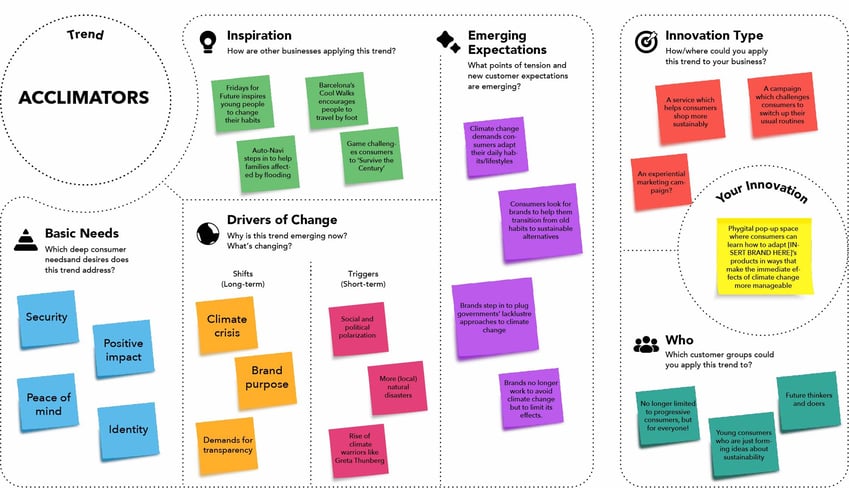
And voila! There you have it. If you’d like a more in-depth walkthrough of the Consumer Trend Canvas – and to learn more about how we spot and identify trends more broadly – sign up to TrendWatching Academy.










